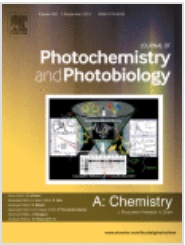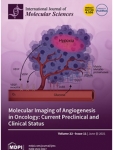Fluorescent core-shell particles are used as versatile fluorophores in confocal microscopy based image analysis and as a colloidal model system to study short and long-range interactions. Bright and stable microspherical probes are proposed as promising materials, especially in bioimaging applications. The release of dyes from fluorescent polymer microspheres is undesirable. Covalent linking of dyes within polymeric spheres during the polymerization process can solve the problem of dye leaching. This requires, e.g. the introduction of reactive groups into the dyes. Its more lipophilic ester-ether derivatives considerably reduced fluorescence. The fluorescent quantum yield of prepared nanoparticles was determined to be below 10%. As-prepared nanoparticles exhibited a low refractive index (1.293–1.349), hence their use is recommended. Scanning electron microscope (SEM) images and the fluorescence correlation spectroscopy (FCS) measurements confirmed high polydispersity of synthesized particles (40–230 nm), and are in agreement with the dynamic light scattering (DLS) and nanoparticle tracking analysis (NTA) results (hydrodynamic diameters 203 ± 9, 548 ± 50, 146 ± 2 nm). The zeta potential of fluorescent 1H,1H-heptafluoro-n-butyl methacrylate (HFBMA) shell nanoparticles (NPs) with propargyl ether-esters, 2-methyl allyl ether-esters and allyl ether-esters of fluorescein was -44.5,-14, -44.7 mV, respectively. The values are different despite the slight difference in the structure of ester-ether derivatives.



